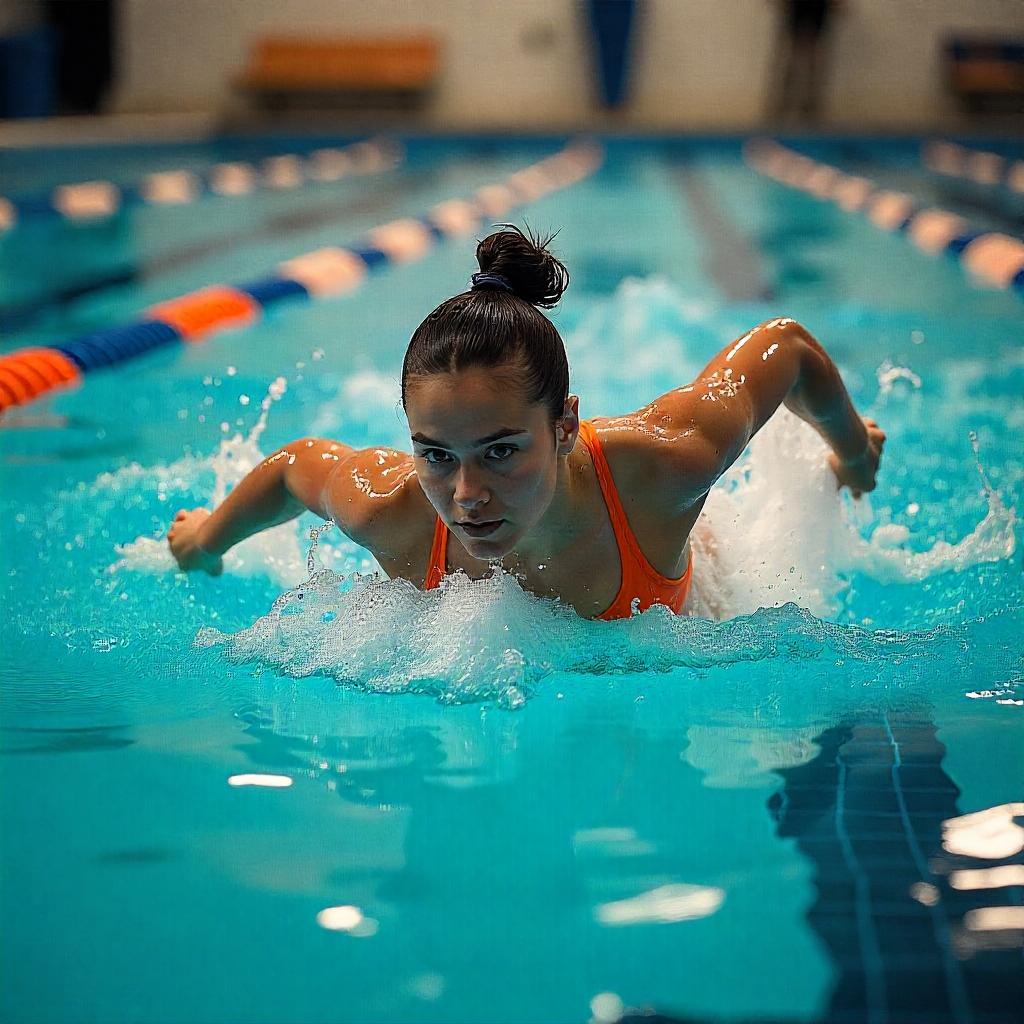In the high-stakes world of competitive swimming, where races are often won by hundredths of a second, a powerful start is non-negotiable. For backstroke specialists, this is especially true. The unique backward launch from the wall is a blend of explosive power, precise technique, and unwavering confidence. Mastering these essential backstroke start techniques is the single most effective way to gain an immediate advantage over your competitors and set the stage for a personal best.

While natural talent plays a role, the flawless execution of a start is a learned skill, a testament to dedicated practice. It’s the meticulous attention to detail that separates good swimmers from the truly great ones. Throughout history, legendary swimmers have consistently demonstrated an unparalleled mastery of their start, using it as a weapon to dominate their races from the very first moment.
Ready to transform your start from a weakness into your greatest strength? Let's break down the mechanics of a perfect backstroke start into five actionable phases.
Phase 1: The Setup and Grip
It all begins before the beep. Your initial position is the foundation for all the power you're about to generate.
Grip: Firmly place your hands on the block or bar, whether it's located above or below the water surface. Your grip should be secure but not tense.
Foot Placement: Plant the balls of your feet firmly on the wall, shoulder-width apart. Your knees should be bent at a sharp angle, ready to spring.
Body Position: Coil your body like a spring. Keep your hips high and your head relaxed. This poised, athletic stance is crucial for a reactive and explosive launch.
Phase 2: The Explosive Launch
The start signal is your cue to unleash stored energy. This is not a gentle push; it's a violent and coordinated thrust.
The Movement: In one fluid motion, pull your body up and slightly out of the water with your arms while driving backwards with immense force through your legs.
The "Throw": As you push, actively throw your head back towards your entry point. Your arms should follow, extending straight back. This coordinated "throw" generates crucial backward momentum.
Phase 3: The Arch and Entry
The flight through the air is brief but critical. Your goal is to enter the water with minimal resistance.
The Arch: As you leave the wall, your body should form a smooth, pronounced arch. Your head is back, your hips are up, and your arms are extended behind you.
The Entry: Aim to pierce the water in a single, small hole created by your hands and the crown of your head. A clean, "hole-less" entry is paramount for maintaining the speed you just generated.
Phase 4: The Underwater Powerhouse
This is where races are truly won. The underwater phase is faster than surface swimming, so maximize it.
Tight Streamline: The instant you are submerged, lock yourself into a razor-sharp streamline. Squeeze your biceps by your ears, engage your core, and point your toes.
Powerful Dolphin Kicks: Without a moment's hesitation, initiate a series of powerful, rhythmic dolphin kicks. Drive the motion from your core, not just your knees.
Phase 5: The Breakout
Don't waste all your hard work by botching the transition to the surface.
Timing: As you approach the 15-meter mark (the legal limit), begin your transition.
The First Stroke: Time your first stroke to coincide with a strong final dolphin kick. This first pull should be powerful to help maintain your speed as you break the surface and into your full stroke rhythm.
Common Pitfalls & How to Fix Them
The Belly Flop (Flat Entry): Caused by not arching enough or lifting your head. Focus on throwing your head back and driving your hips upward.
The Speed Killer (Early Head Lift): Peeking to see where you're going instantly destroys your streamline. Trust your technique and keep your head locked in place until you breakout.
The Weak Push: Results from a poor initial leg position or hesitant launch. Focus on driving explosively from the balls of your feet.
By deconstructing and diligently practicing each phase, you can develop a start that instills confidence and intimidates competition. Incorporate these techniques into your training, film your starts for analysis, and watch as you explode off the wall with a new level of speed and precision.
